Technology: Essential Concepts for Reading Comprehension
Introduction
Technology topics in reading comprehension passages often delve into how emerging innovations impact society, ethics, and human behavior. These passages frequently link technical details to broader implications, fostering critical analysis of trends reshaping our world.
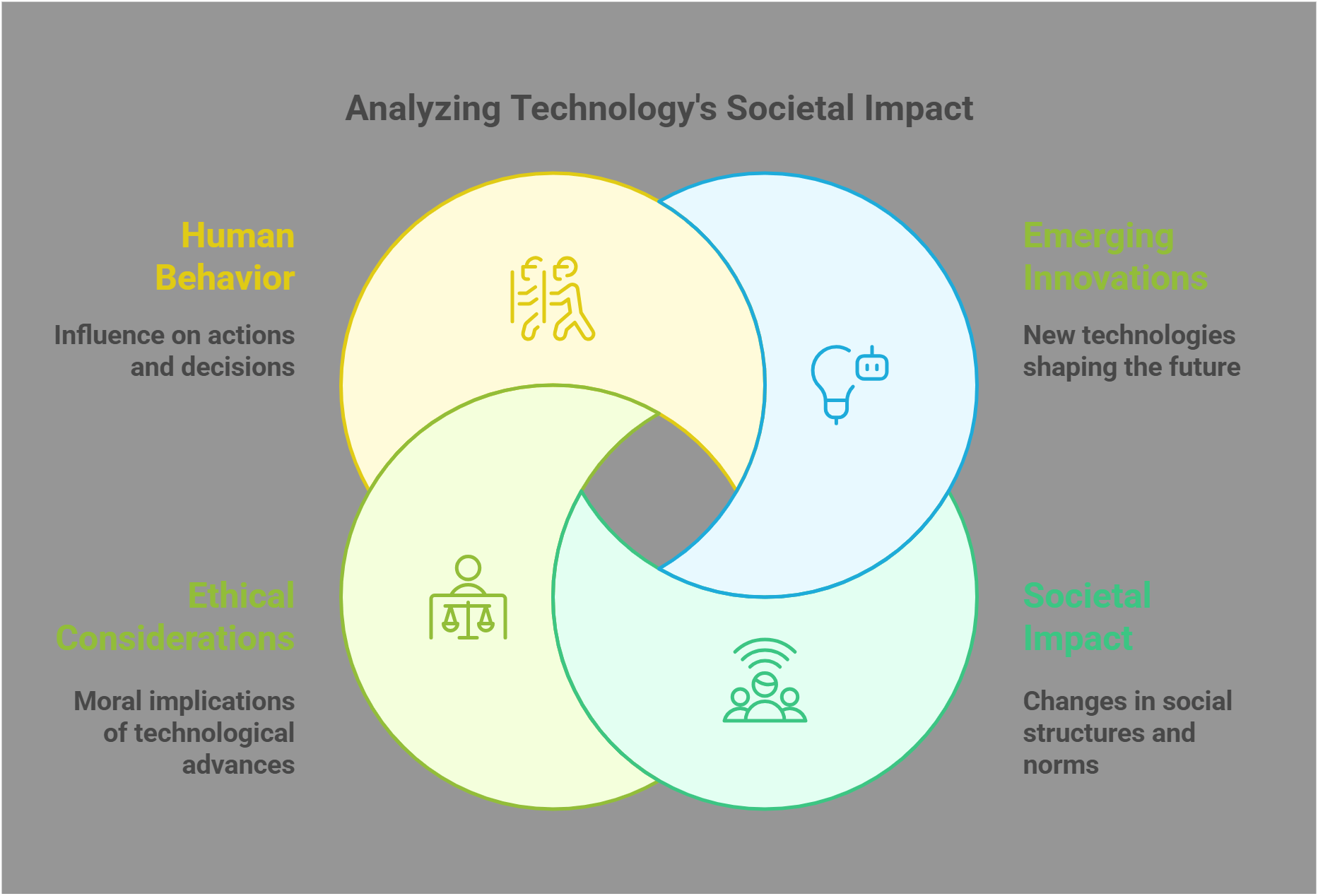
Overview
This guide explores 10 key technological concepts:
- Generative AI & Ethics
- Digital Twins
- Quantum Supremacy
- AI Governance
- Edge Computing
- Neuromorphic Computing
- Extended Reality (XR)
- Zero-Trust Security
- AI Hallucination
- Autonomous Systems Ethics
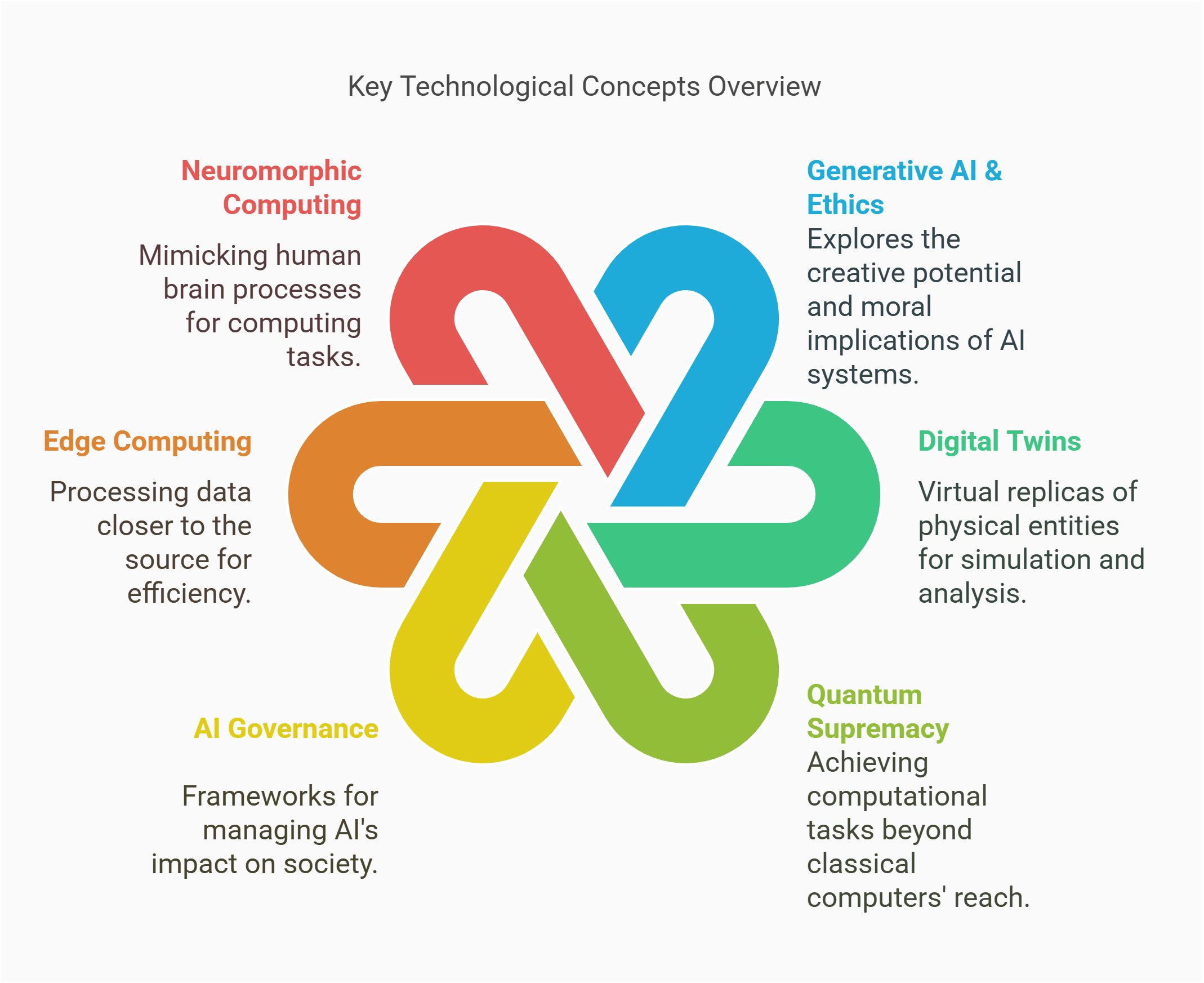
Detailed Explanations
1. Generative AI & Ethics
Generative AI is a transformative technology creating original content—text, images, and more—by learning patterns in massive datasets. Its ethical challenges include redefining creativity, authorship, and originality while raising concerns about intellectual property and job displacement.
- Creates diverse content using learned patterns.
- Redefines traditional notions of creativity and authorship.
- Raises ethical and legal concerns, including intellectual property.
- Impacts industries like entertainment and software development.
- Challenges societal understanding of “authentic” creation.
How Would You Explain This to a 10-Year-Old?
Imagine a super-smart robot that can write stories, draw pictures, or make music just by learning from other people’s work. But it doesn’t think like you—it just mixes what it knows into something new. Cool, right? But who gets the credit—the robot or the person who taught it?
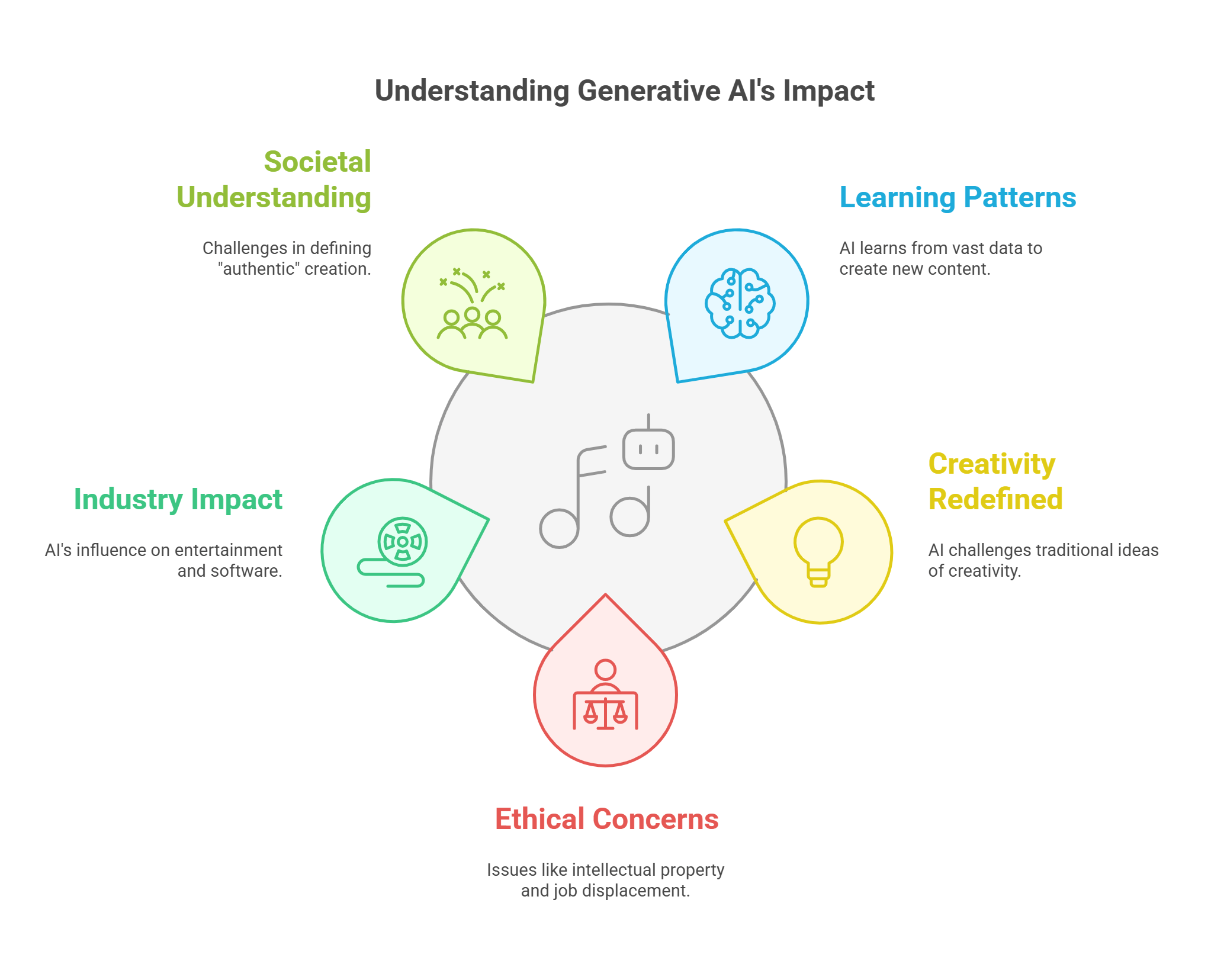
2. Digital Twins
A Digital Twin is a real-time virtual replica of a physical object or system. It uses data to mirror the behavior and characteristics of its real-world counterpart, enabling performance monitoring, problem prediction, and risk-free testing.
- Creates a virtual copy of real-world objects or systems.
- Dynamic and data-driven, reflecting real-time changes.
- Enables predictive analysis and optimization.
- Widely used in industries like healthcare, manufacturing, and urban planning.
- Bridges physical and digital environments for better decision-making.
How Would You Explain This to a 10-Year-Old?
Think of your favorite toy car. Now imagine having a magical computer version of it that knows everything about how your car works. If your toy might break, the computer version would tell you in advance and even show you how to fix it—without touching your real toy!
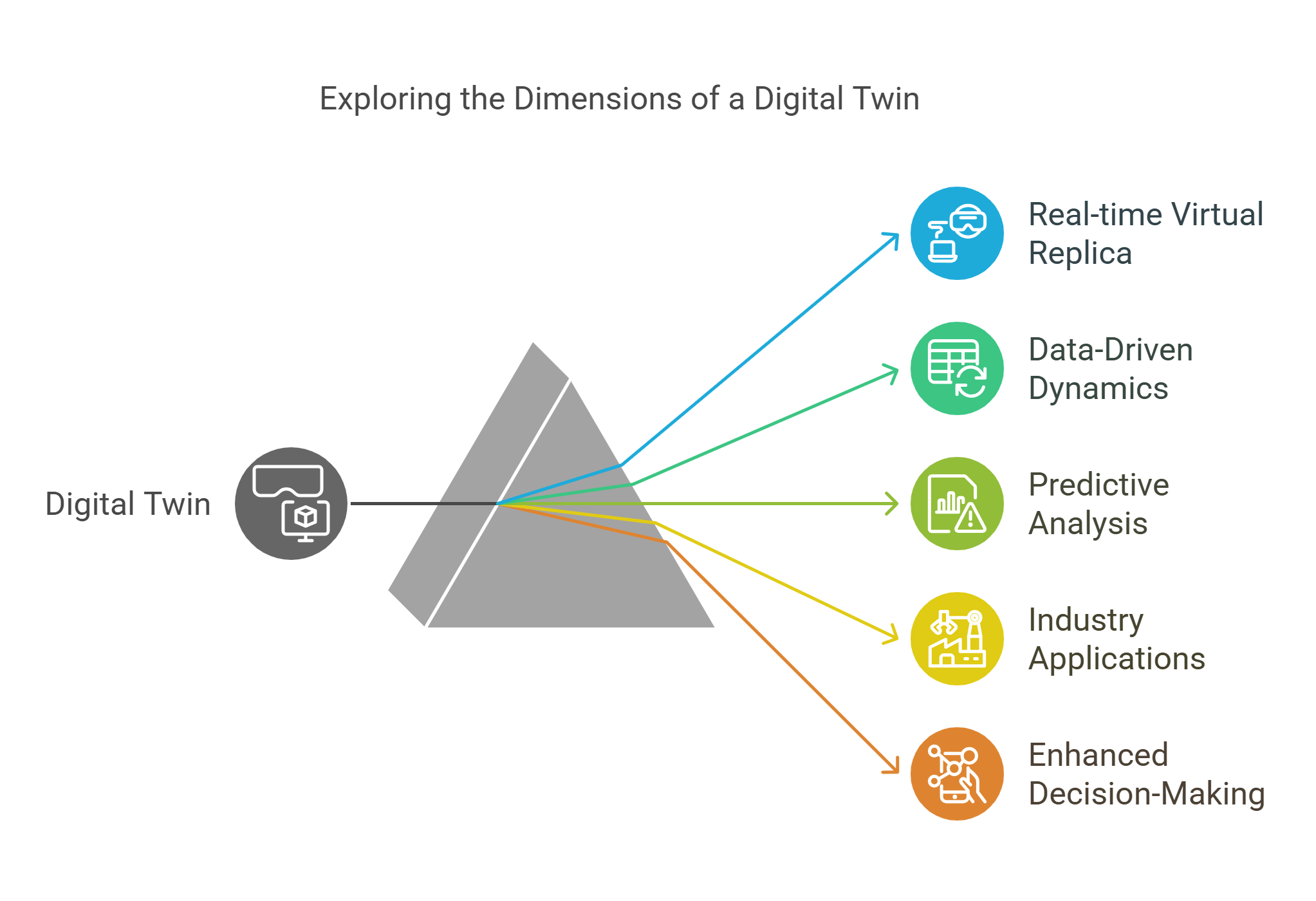
3. Quantum Supremacy
Quantum Supremacy refers to the point when quantum computers solve problems that traditional computers cannot. Unlike classical bits, quantum bits (qubits) can exist in multiple states simultaneously, enabling exponentially faster problem-solving.
- Revolutionary computational power beyond classical limits.
- Uses quantum principles like superposition and entanglement.
- Solves problems in cryptography, medicine, and complex simulations.
- Challenges current encryption and data protection systems.
- Represents a major leap in computing technology.
How Would You Explain This to a 10-Year-Old?
Imagine your regular computer is like a flashlight—great for lighting up one room at a time. A quantum computer is like turning on all the lights in a building at once. It can solve really tricky puzzles super-fast, like figuring out a giant maze in seconds.
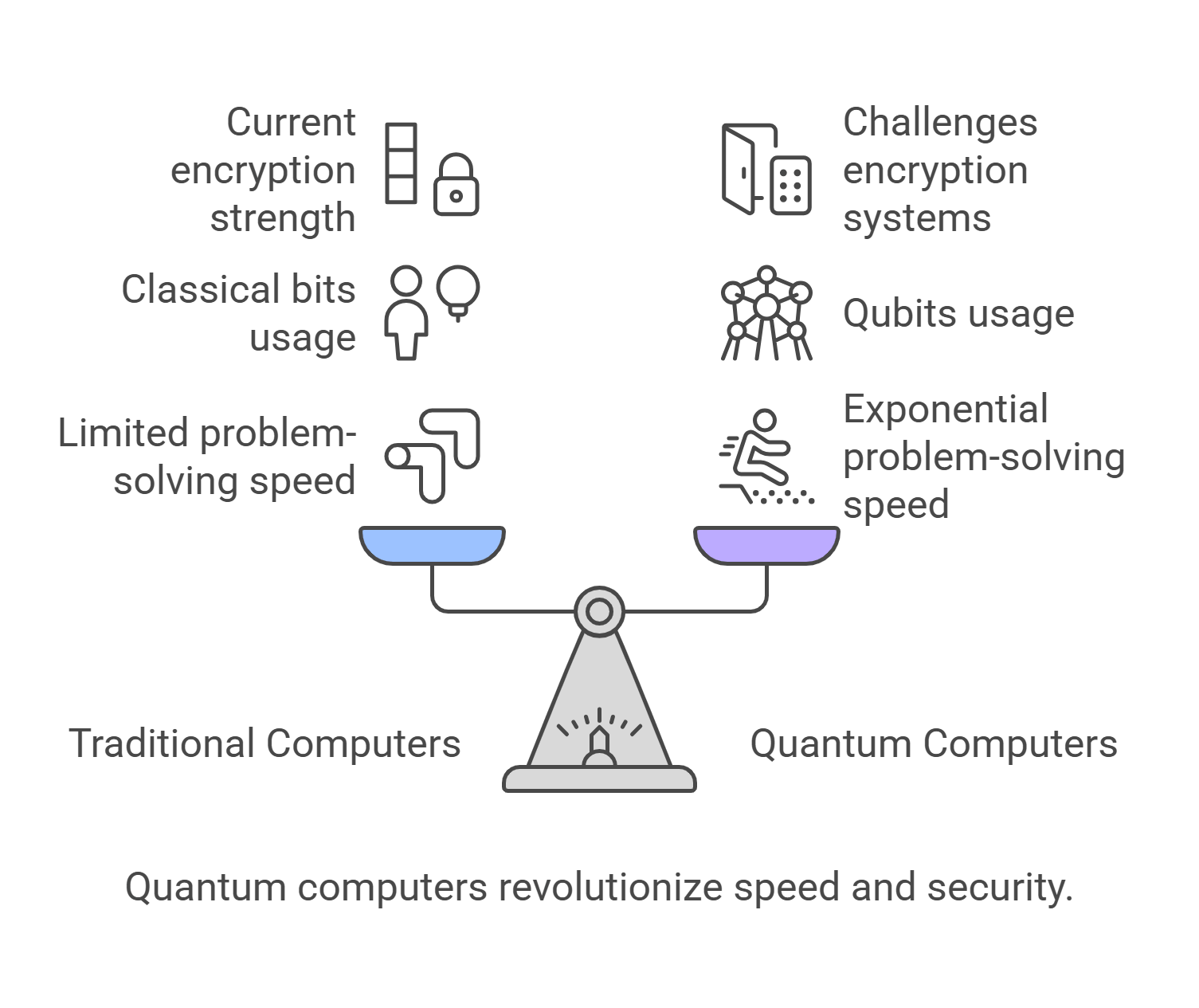
4. AI Governance
AI Governance involves rules, ethical guidelines, and accountability measures for AI development and use. It ensures that AI systems are fair, safe, and beneficial while addressing risks like bias, misuse, and lack of transparency.
- Establishes ethical and legal frameworks for AI.
- Ensures fairness, transparency, and accountability.
- Balances innovation with safety and societal benefits.
- Addresses challenges like bias and privacy concerns.
- Involves policymakers, technologists, and ethicists.
How Would You Explain This to a 10-Year-Old?
Think of AI as a super-smart robot. AI Governance is like a set of rules to make sure the robot doesn’t cheat, hurt people, or keep secrets. It’s about teaching robots to play fair and follow the rules we set.
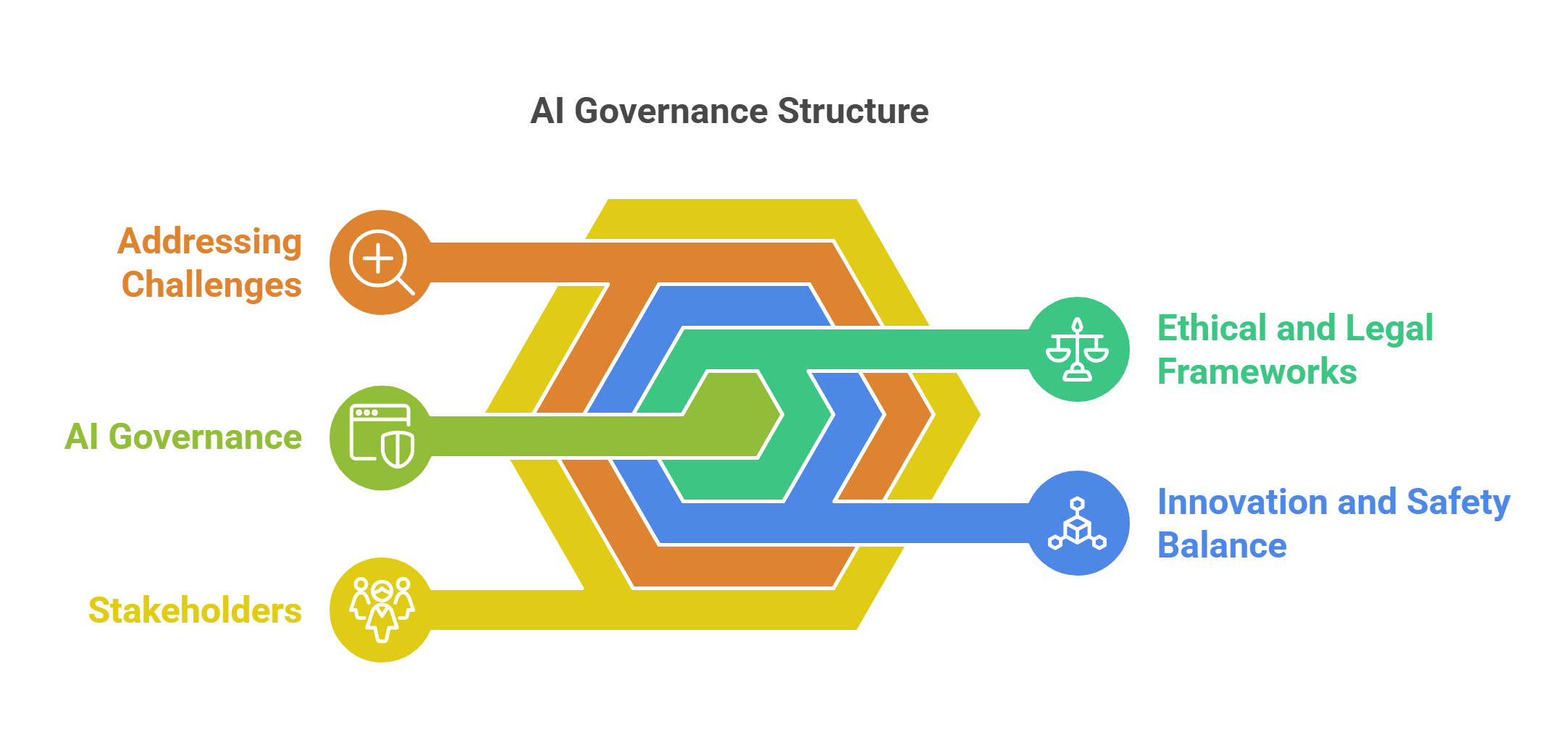
5. Edge Computing
Edge Computing processes data close to its source rather than sending it to distant servers. This reduces delays, saves bandwidth, and enhances privacy, making it vital for real-time applications like autonomous cars and smart cities.
- Processes data locally instead of relying on central servers.
- Reduces latency, enabling faster responses.
- Enhances privacy by keeping data closer to the source.
- Optimizes bandwidth usage.
- Crucial for IoT, healthcare, and real-time tech applications.
How Would You Explain This to a 10-Year-Old?
Imagine you ask a teacher a question, and they have to call someone far away for the answer. That takes time. Now imagine your teacher has a tiny helper right in the room who gives you the answer right away. That’s what edge computing does—it keeps the “helper” close by.
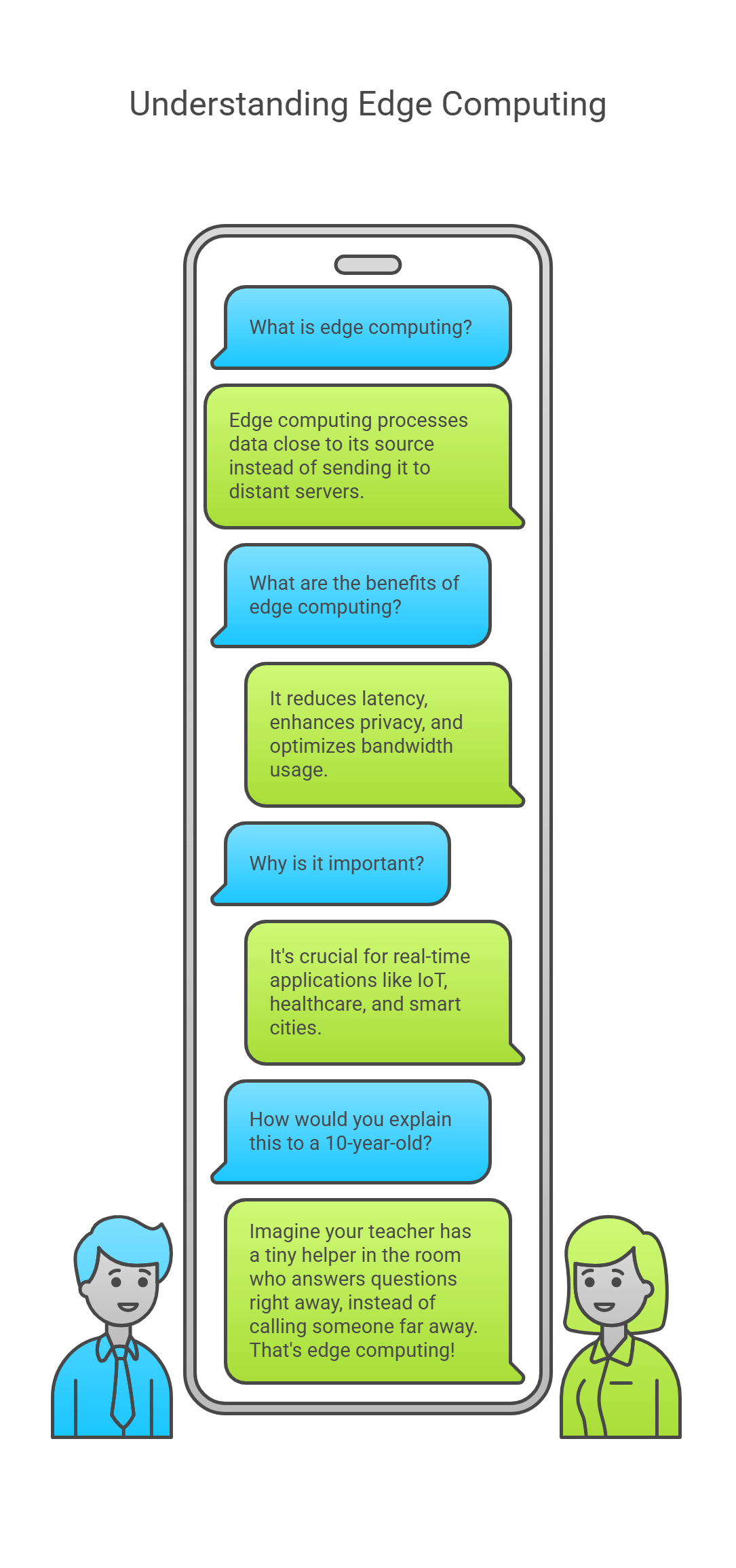
6. Neuromorphic Computing
Neuromorphic Computing mimics the human brain by processing information in parallel rather than sequentially like traditional computers. This technology is highly efficient for tasks like pattern recognition, learning, and decision-making.
- Inspired by brain-like neural networks.
- Processes information simultaneously, not step-by-step.
- Energy-efficient and adaptable to new tasks.
- Ideal for AI, robotics, and adaptive systems.
- Bridges neuroscience and computer engineering.
How Would You Explain This to a 10-Year-Old?
Think of your brain as a super-cool computer that can do lots of things at the same time—like listening to music while drawing. Neuromorphic computers try to copy how your brain works so they can learn and think faster, just like you!
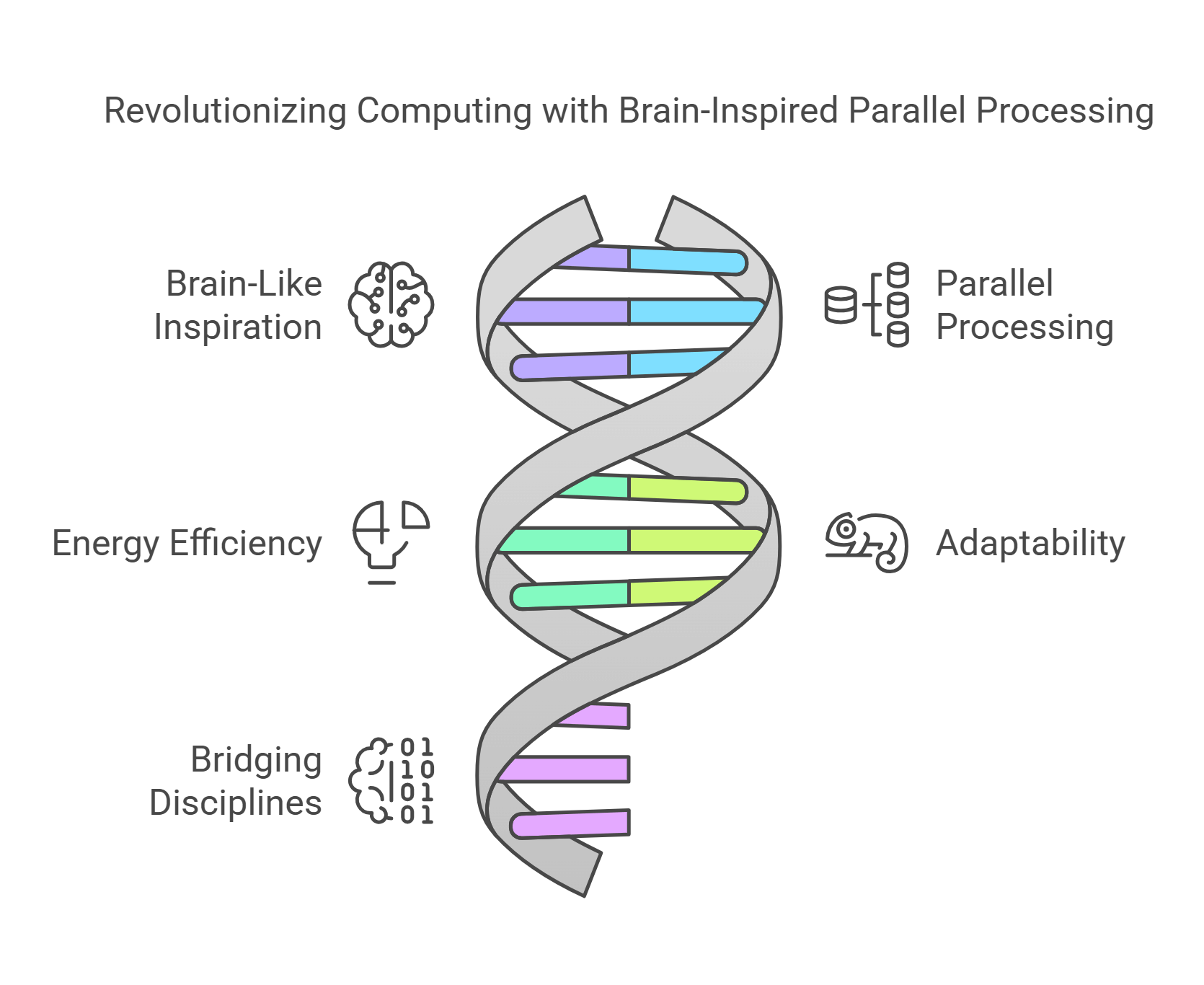
7. Extended Reality (XR)
Extended Reality (XR) is an umbrella term encompassing Virtual Reality (VR), Augmented Reality (AR), and Mixed Reality (MR). These technologies blend the digital and physical worlds to create immersive experiences, transforming how we interact with information and environments.
- Combines VR, AR, and MR technologies.
- Creates immersive, interactive environments.
- Enhances education, gaming, healthcare, and training.
- Bridges the digital and physical worlds.
- Drives innovation in human-computer interaction.
How Would You Explain This to a 10-Year-Old?
Imagine wearing special glasses that turn your living room into a jungle, where you can see animals running around, or into a classroom where your teacher is a hologram. XR makes things look and feel real, even when they’re not really there!
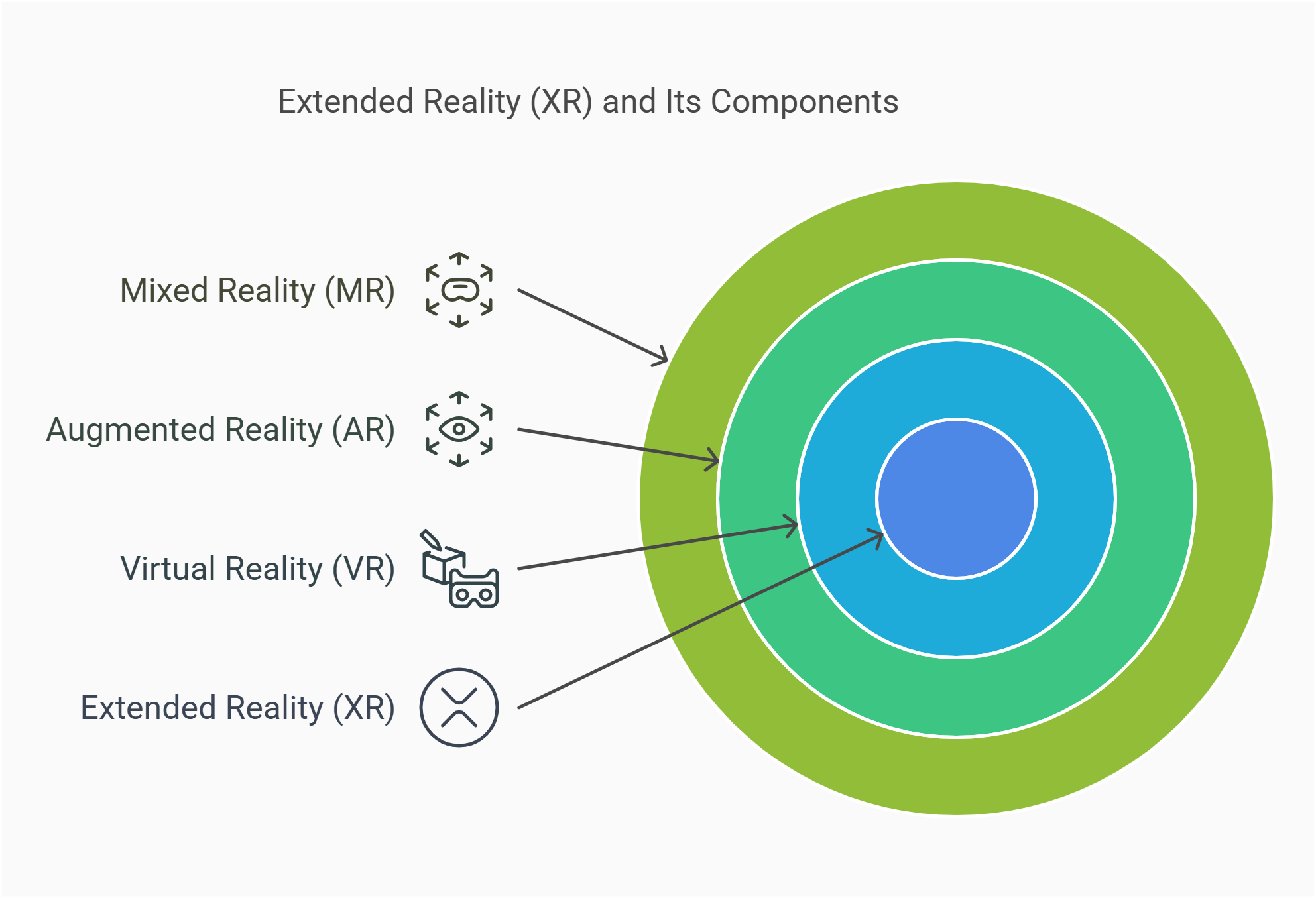
8. Zero-Trust Security
Zero-Trust Security is a cybersecurity model that assumes no user or device is trustworthy by default, even if they’re inside a secure network. It requires continuous verification, focusing on strict access controls and monitoring.
- “Never trust, always verify” approach.
- Ensures all access requests are verified.
- Enhances security in complex digital environments.
- Protects against breaches and insider threats.
- Essential for modern cloud-based systems.
How Would You Explain This to a 10-Year-Old?
Think of a castle with super-tight security. Even the king has to show a secret password every time he enters a room! That’s how Zero-Trust Security works—it checks everyone, every time, no matter who they are.
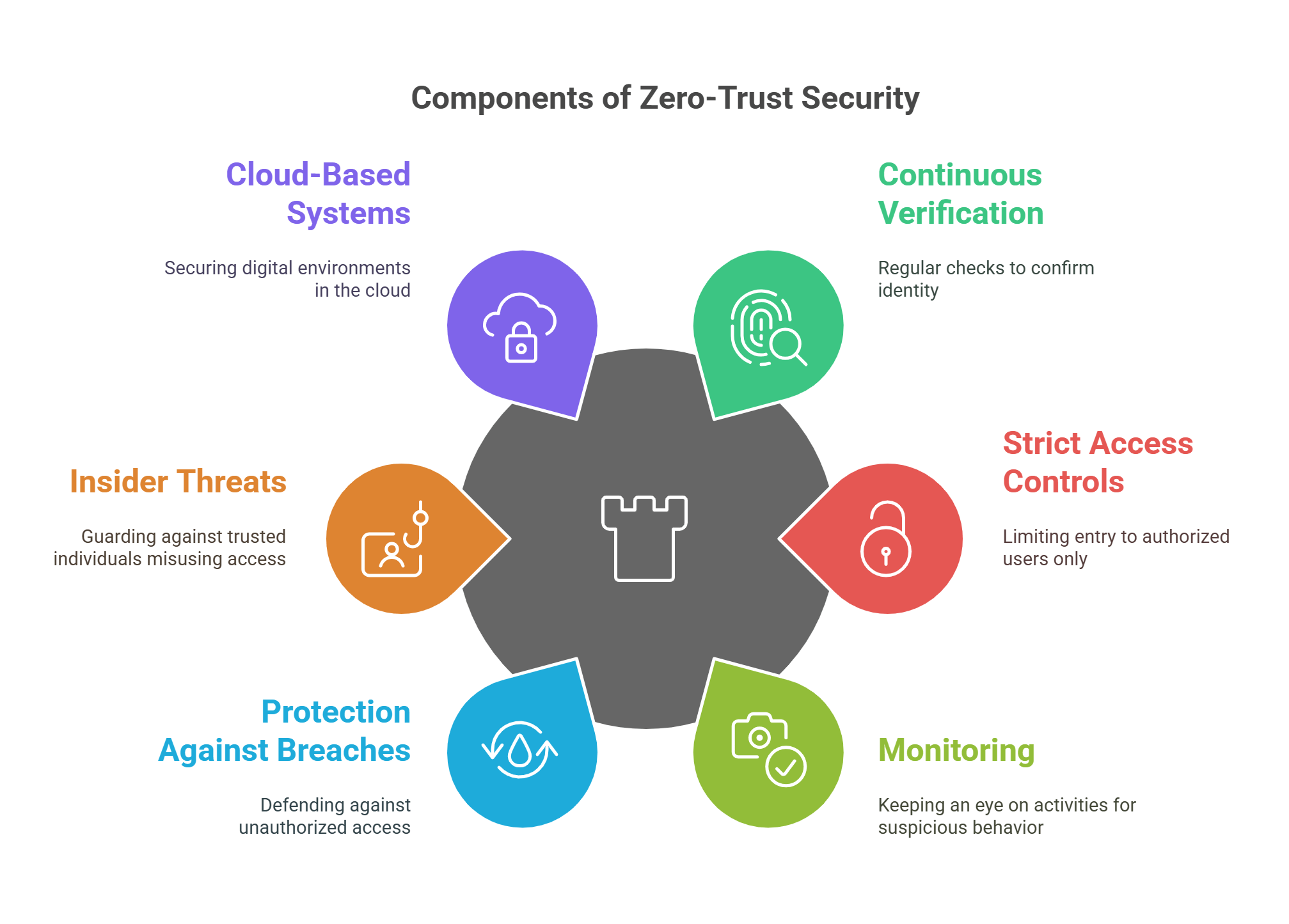
9. AI Hallucination
AI Hallucination refers to instances when AI generates false or nonsensical information that appears plausible. It highlights the limitations of AI systems in understanding context and truth, raising concerns about reliability in critical applications.
- AI produces incorrect but convincing results.
- Shows limits of AI in understanding context.
- Requires human oversight for accuracy.
- Impacts trust in AI-generated information.
- Raises ethical concerns in AI deployment.
How Would You Explain This to a 10-Year-Old?
Imagine asking your robot friend a question, and it confidently tells you something totally wrong, like “The sun is made of candy.” It’s not lying—it just doesn’t understand things as well as you do yet. That’s what AI hallucination means.
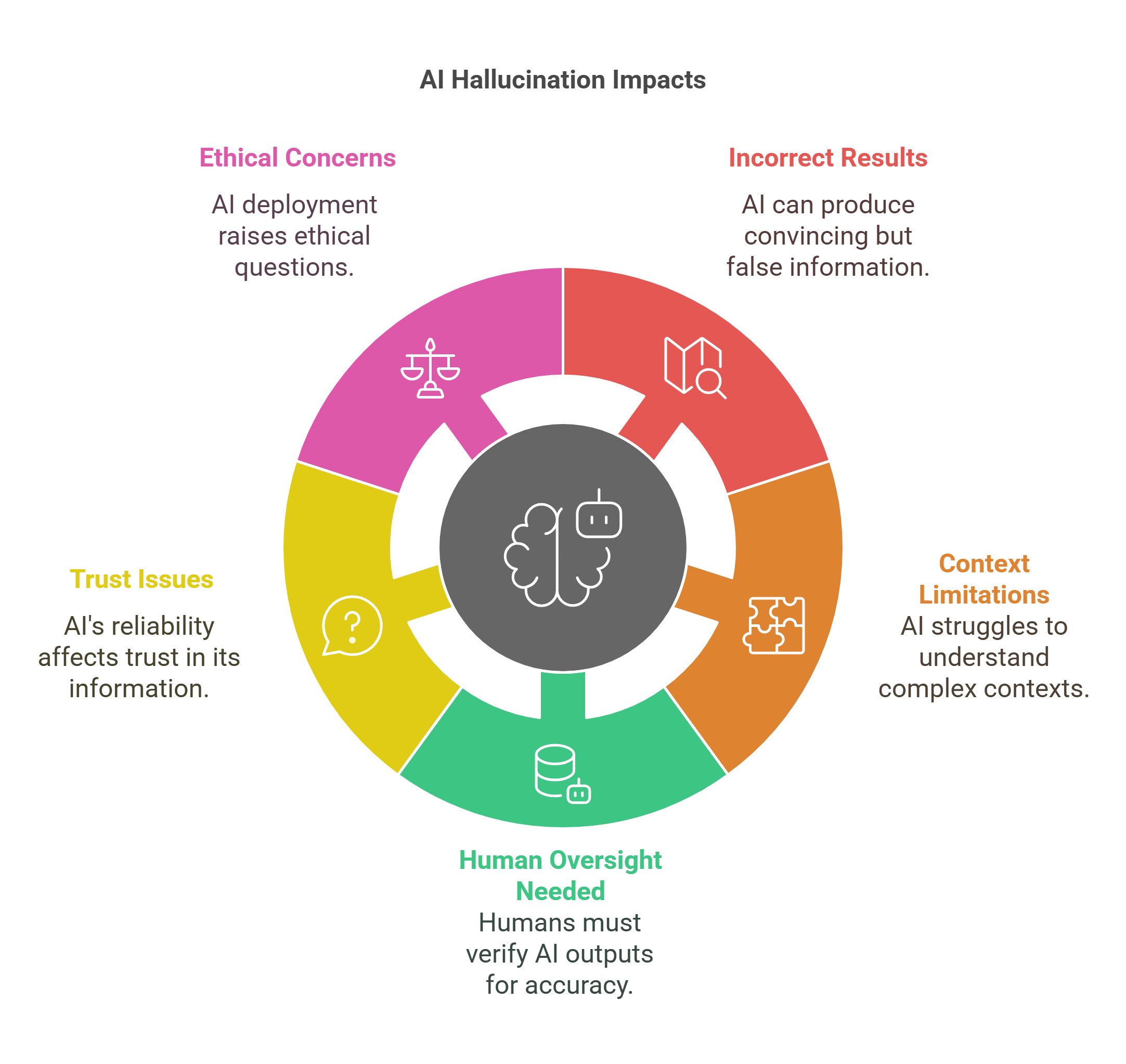
10. Autonomous Systems Ethics
Autonomous Systems Ethics explores the moral implications of machines making decisions independently, such as self-driving cars or drones. It focuses on ensuring these systems operate safely, ethically, and in alignment with human values.
- Addresses moral challenges of independent machines.
- Balances safety with automation.
- Considers accountability for machine decisions.
- Examines societal impacts of reduced human control.
- Develops ethical guidelines for autonomy.
How Would You Explain This to a 10-Year-Old?
Imagine a car that drives itself and decides how to avoid accidents. What if it had to pick between hitting a wall or bumping another car? Autonomous ethics are like teaching the car the “right” thing to do in tricky situations.
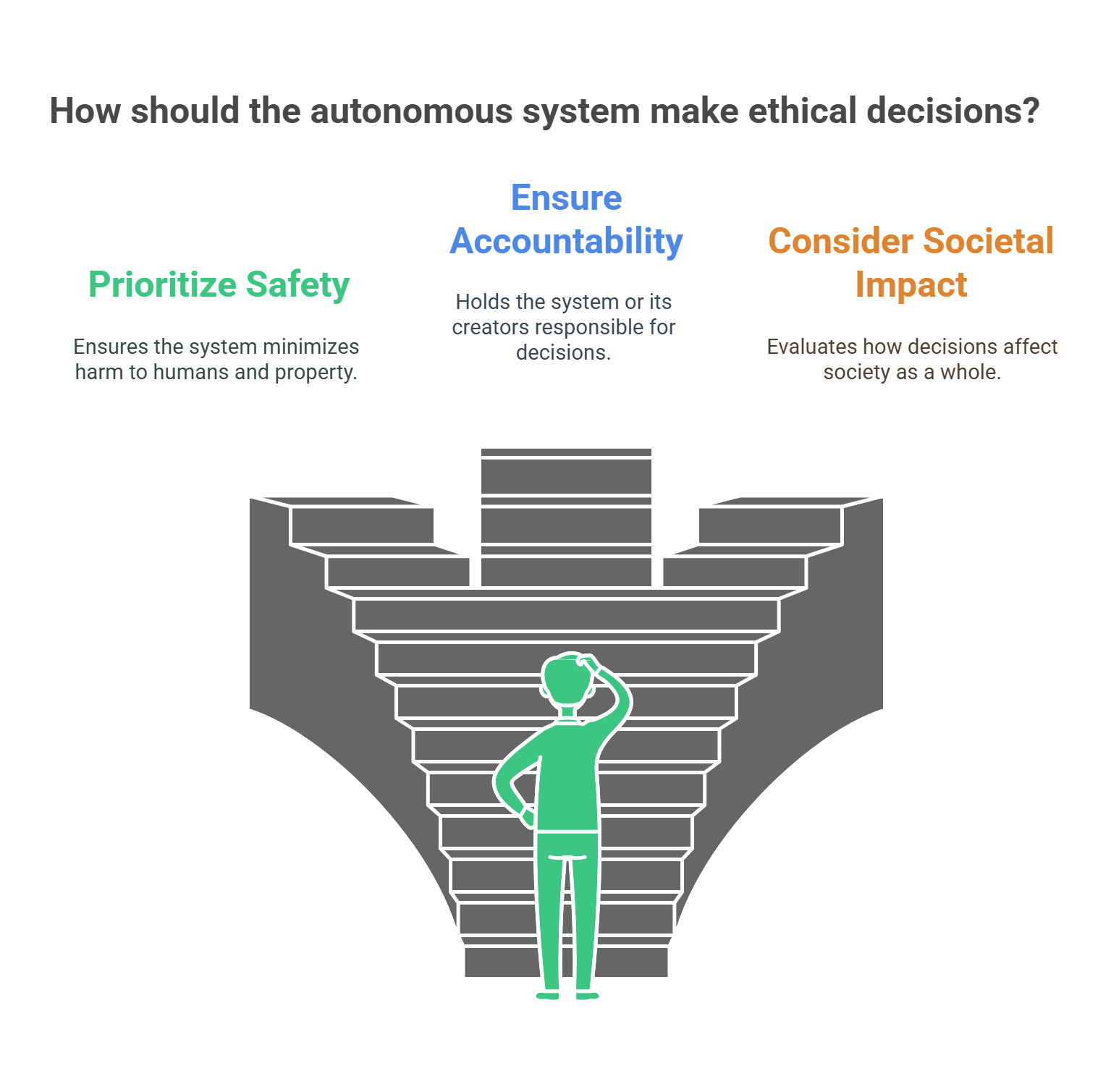
Conclusion
The concepts of Extended Reality, Zero-Trust Security, AI Hallucination, and Autonomous Systems Ethics underline the complex relationship between technology and humanity. By understanding these ideas, readers can better interpret RC passages that explore the societal, ethical, and practical implications of technology. Familiarity with such topics enhances critical thinking, enabling test-takers to engage thoughtfully with diverse reading materials.











